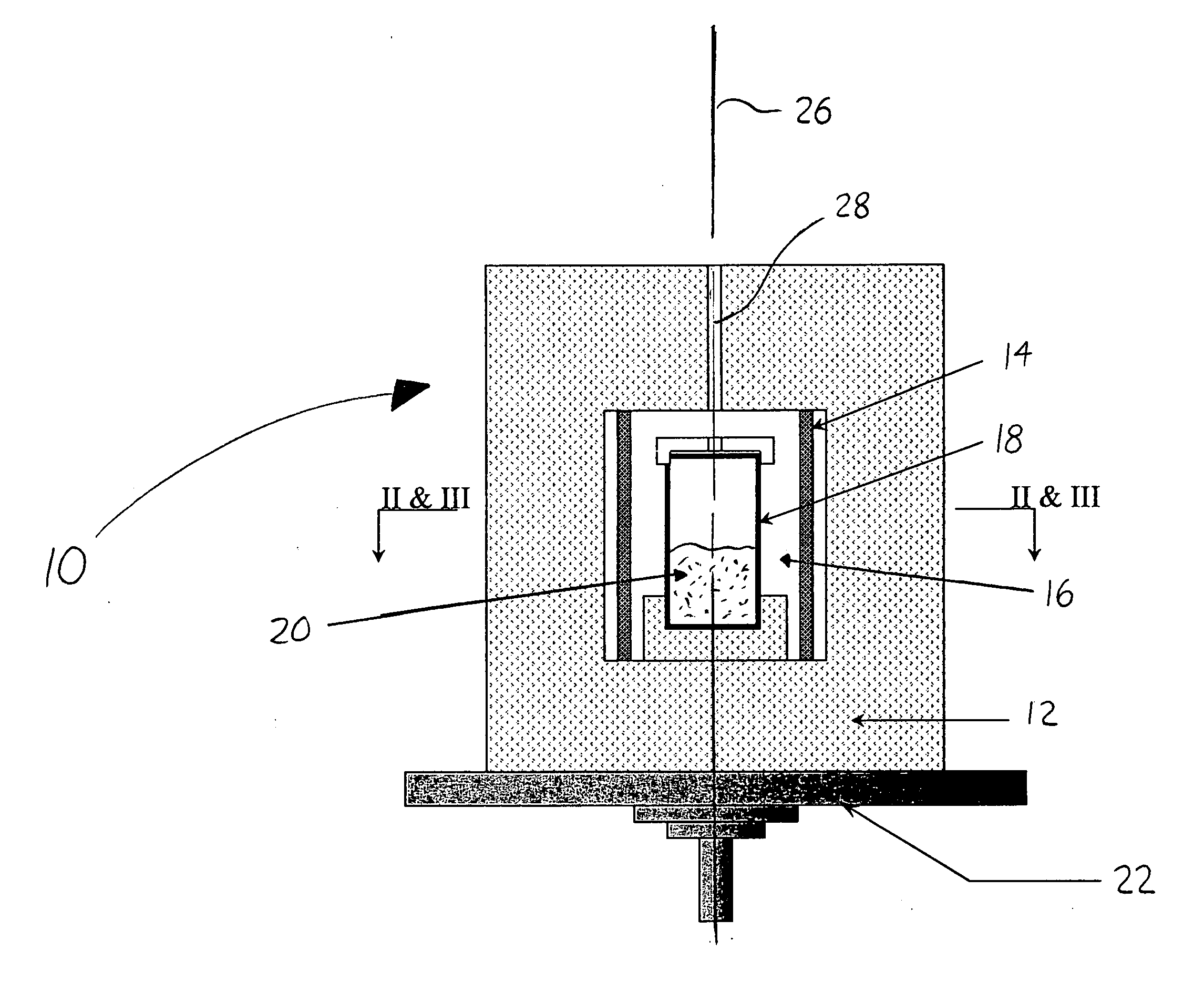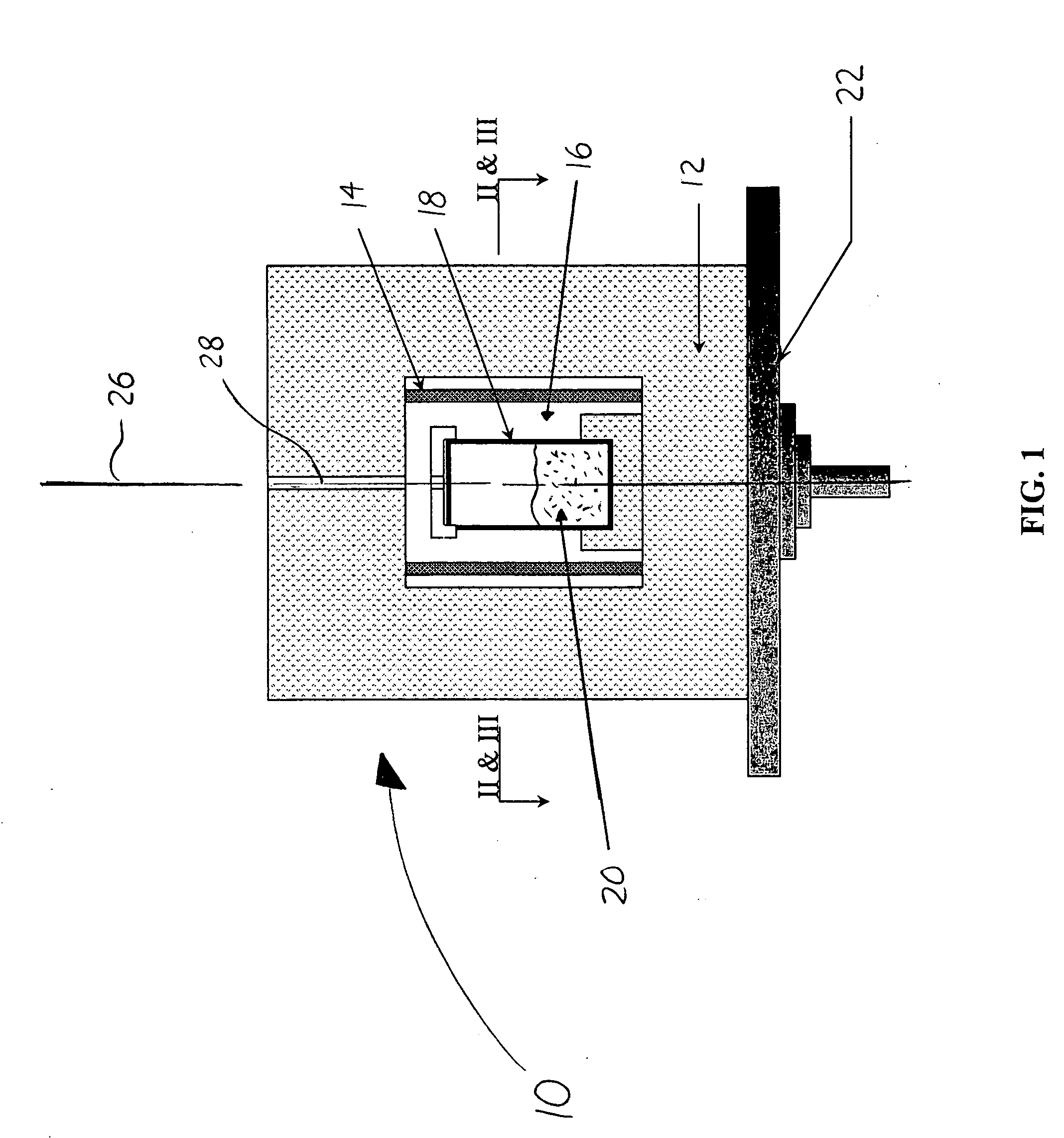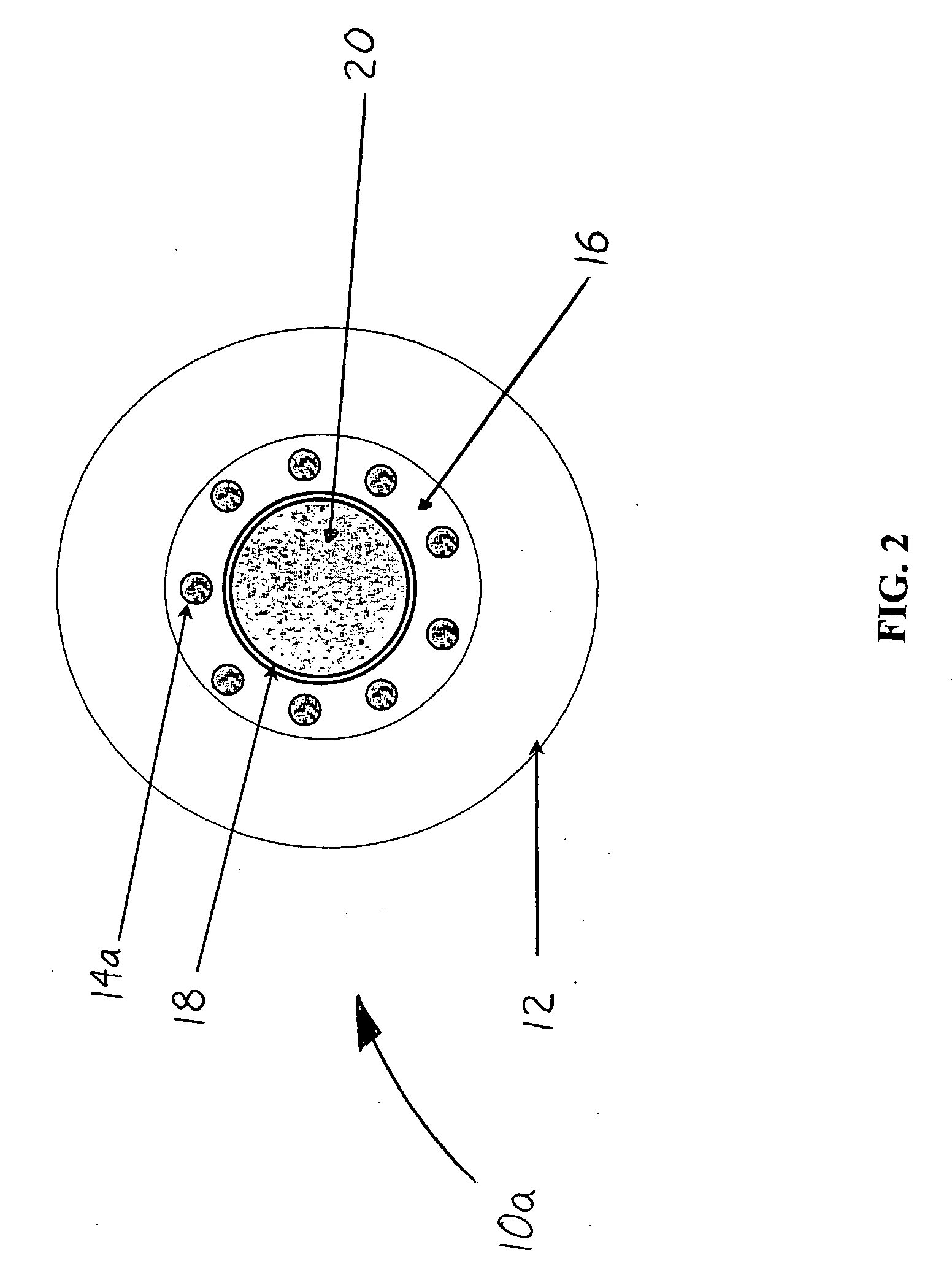Method and apparatus for microwave phosphor synthesis
- Summary
- Abstract
- Description
- Claims
- Application Information
AI Technical Summary
Benefits of technology
Problems solved by technology
Method used
Image
Examples
example 1
Halophosphor
[0036] a. Pyrophosphate Synthesis
[0037] It was found that the conversion from CaHPO4 (dicalcium phosphate) to Ca2P2O7 (pyrophosphate) could be completed within 10 minutes at 450° C. by microwave processing. The weight loss and X-ray diffraction (XRD) of the product indicated that the conversion reaction was complete. The microwave converted powders were pure β-pyrophosphate and were finer than the conventional powder. When the temperature or treating time was increased, the particle size of the product increased. However, the microwave converted pyrophosphate powders were obviously finer than the conventionally converted product (See Table 1). The finer powder will be more reactive and thus facilitate the synthesis reaction. Pyrophosphate can be used for the synthesis of halophosphate phosphors.
TABLE 1Median particle size of the microwave converted pyrophosphateConventionalMicrowaved Starting Material800° C. / 20 min.450° C. / 35 min.450° C. / 20 min.7.58 μm6.40 μm6.15 μm5...
example 2
BAM
[0042] Conventionally, BaMgAl10O17:Eu (BAM) is produced by firing the mixture of raw materials in a reducing atmosphere at 1600-1650° C. for two hours with BaF2 as flux. The total firing process lasts 6-8 hours. In the conventional production of BAM, alumina crucibles are used in a pusher furnace. Each crucible can be used only for a limited number of runs.
[0043] a. BAM with Moderate Flux Level
[0044] Mixtures containing aluminum hydroxide, magnesium oxide, barium carbonate, and europium oxide with a moderate level of BaF2 flux (10%) were fired in the microwave furnace. Temperatures ranged from about 1250° C. to about 1500° C. in an atmosphere of 25% N2 and 75% H2 for up to about 20 min. The fired phosphor remained loose, soft, and fine (See Table 3).
TABLE 3Processing conditions and physical properties of the microwaveBAM with fluxRun No.Temp. (° C.)Atm.Hold, min.Powder / LOIXRDBAM 6150025%H22loose / 30.77identicalto controlBAM 7150025%H210loose / 30.72identicalto controlBAM 814002...
example 3
LAP
[0050] Conventionally, LAP is prepared using fluxes such as boric acid (H3BO3) and lithium carbonate (Li2CO3) and is fired at 1200° C. for about four hours in a reducing atmosphere. The microwaved LAP phosphors were prepared from a mixed co-precipitate of lanthanum phosphate, cerium phosphate, and terbium phosphate. LAP phosphors with and without flux were synthesized. The microwave time and temperature conditions were varied (See Table 6). Preferably, the LAP phosphors are synthesized at about 800° C. to about 1125° C. for about 10 minutes to about 30 minutes.
TABLE 6LAP phosphors synthesized by microwave processingRun No.TypeConditionsAtmosphereLAP 1Unfluxed1125° C. / 30 min5%H2 / ArLAP 2Fluxed1100° C. / 10 min5%H2 / ArLAP 3Unfluxed900 ± 50° C. / 20 min5%H2 / ArLAP 4Unfluxed965 ± 65° C. / 20 min5%H2 / ArLAP 5Unfluxed910 ± 50° C. / 20 minStatic AirLAP 6Unfluxed970 ± 75° C. / 20 minStatic AirLAP 7Fluxed885 ± 75° C. / 10 min5%H2 / Ar
[0051] These LAP phosphors were characterized by measuring the powder ...
PUM
 Login to View More
Login to View More Abstract
Description
Claims
Application Information
 Login to View More
Login to View More - R&D
- Intellectual Property
- Life Sciences
- Materials
- Tech Scout
- Unparalleled Data Quality
- Higher Quality Content
- 60% Fewer Hallucinations
Browse by: Latest US Patents, China's latest patents, Technical Efficacy Thesaurus, Application Domain, Technology Topic, Popular Technical Reports.
© 2025 PatSnap. All rights reserved.Legal|Privacy policy|Modern Slavery Act Transparency Statement|Sitemap|About US| Contact US: help@patsnap.com



